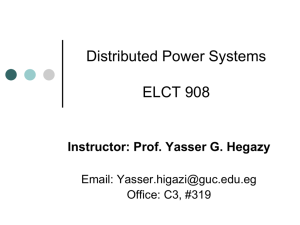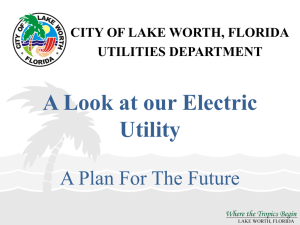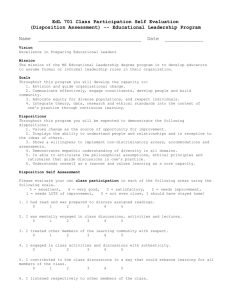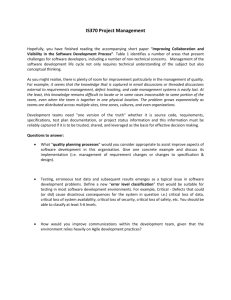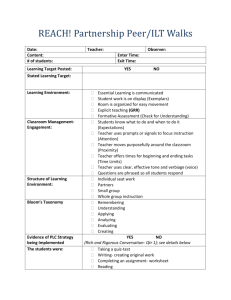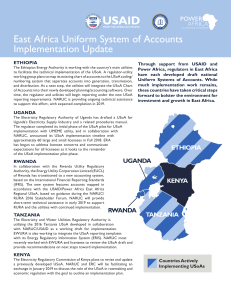Division of Demand-Related Costs
advertisement
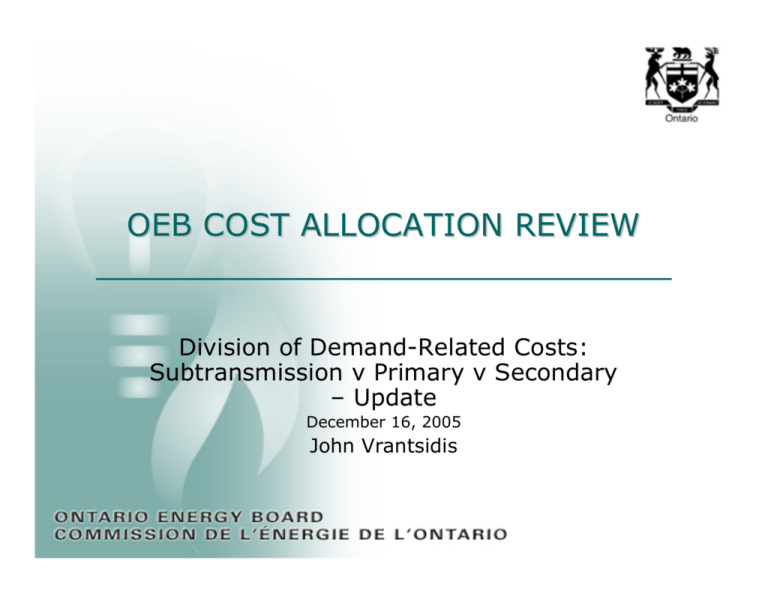
OEB COST ALLOCATION REVIEW Division of Demand-Related Costs: Subtransmission v Primary v Secondary – Update December 16, 2005 John Vrantsidis Background: Scope of Issue Cost causality would be promoted if appropriate share of demand costs can be accurately allocated to various classes (theory is that those who use distribution system less should pay less) Staff Discussion Paper proposed voltage adjustment (primary v secondary) when allocating demand-related costs – common in reference texts Phases 1 & 2 discussed “subtransmisson” distinction (as has been done elsewhere in North America) 2 Background: Available Data? • Present USoA does not accurately track costs on voltage basis - stakeholders will be asked for suggested improvements • Suggest utility engineering judgement be used for forthcoming filings - differing views on how easy and reliable to do - if proves complex, may impact time required to process filings 3 Technical Challenges • Assets could be built for one purpose (e.g. subtransmission), but use change over time (e.g. to primary) • Some assets could have multiple functions • Should common definitions be adopted • Can definitions from US experience be applied to current Ontario environment 4 Filing Objective: Useful information for Future Decision-makers • To what extent can all aspects of this complex technical debate be resolved in the forthcoming informational filings? Is it more useful to ask what potential information should be produced in filings, to facilitate subsequent Board and stakeholder resolution and refinements? Staff open to suggestions for more useful approach 5 Uses of Voltage—based Cost Information 1) Immediate use of information sought is to promote more accurate cost allocation 2) Information could also be used later by parties to advance rate design arguments - present project will not address merits of proceeding to voltage-based rate classifications (introduced elsewhere, but some team members concerned if attempted here) 6 Definition “Secondary” • Phase 2 discussions propose voltage-based definition: - 1000 V as boundary - treatment of Line transformers 7 Definition “Primary” • Phase 2 discussions propose as residual after defining “secondary” and “subtransmission” 8 “Subtransmission” Proposing “functional” subtransmission definition: – to look at how assets used – voltage per se not determinative (in theory, but will work in practice? comments) Some in advisory team suggest may prove clearer to define the concept as “bulk power” – does this help answer above questions better? 9 Phase 3 Discussions Key part of functional definition is the provision of bulk power to load centers Will examine if above definition should cover: i) All Large Users? (if so, why) ii) All Embedded LDCs? (examples contrary mentioned) iii) Any others (larger GS customers?) – who and why Board will be interested if consensus emerges (or will future rate applications need to resolve) 10 Accounts Involved • In final proposal, will list which specific USoA accounts are intended to be covered by the above definitions • specific examples to be finalized in phase 3 11 New Grouping: Transmission Phase 2 discussion suggested may also be necessary to adopt an additional cost grouping for Transmission 12 Engineering Judgement • Staff’s consultant will discuss with 3rd phase advisory team what evidence will be required, and guidelines will be offered, to utilities to distinguish primary v secondary assets - potential “rules of thumbs” 13 Engineering Judgment Phase 2 discussions propose distance be acceptable as one of means to identify (i.e. “subfunctionalize”) subtransmisson costs - illustrations 14
